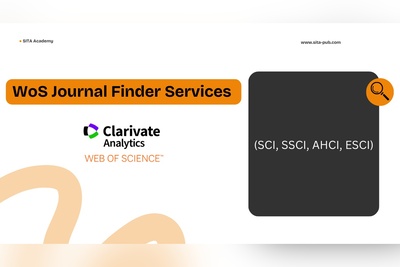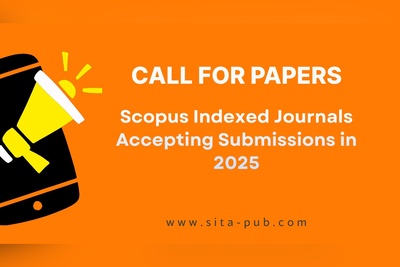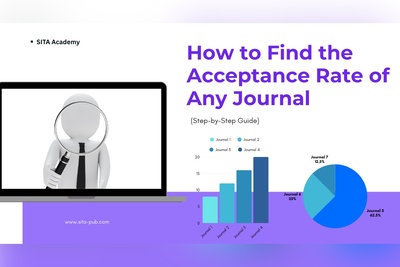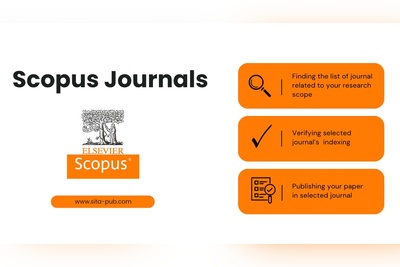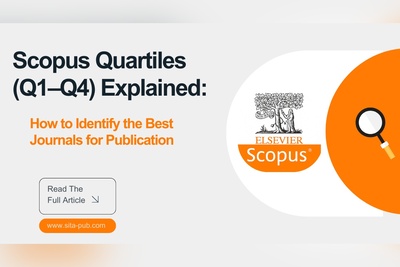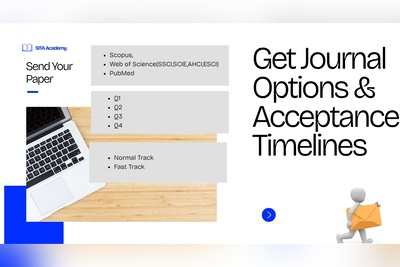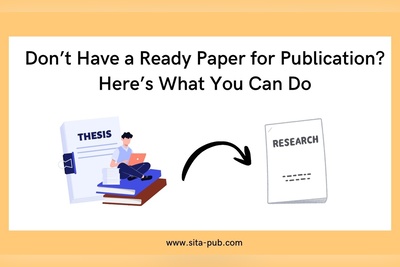University & Institutional Affiliation Examples for Journal Submissions 2025
Learn how to correctly write author affiliation in research papers. This comprehensive guide covers types of affiliations, formatting, multiple authors, corresponding author tips, and common mistakes to ensure proper indexing and professional recognition in Scopus, WOS, and other databases.
- What Is Author Affiliation?
- Where to Place Affiliation in a Manuscript
- Types of Affiliation
- Affiliation Examples for Different Scenarios
- Corresponding Author and Author Order
- Tips for Writing Affiliations in Research Papers
- Common Mistakes to Avoid
- Sample Affiliation Templates
- Why Accurate Affiliations Matter
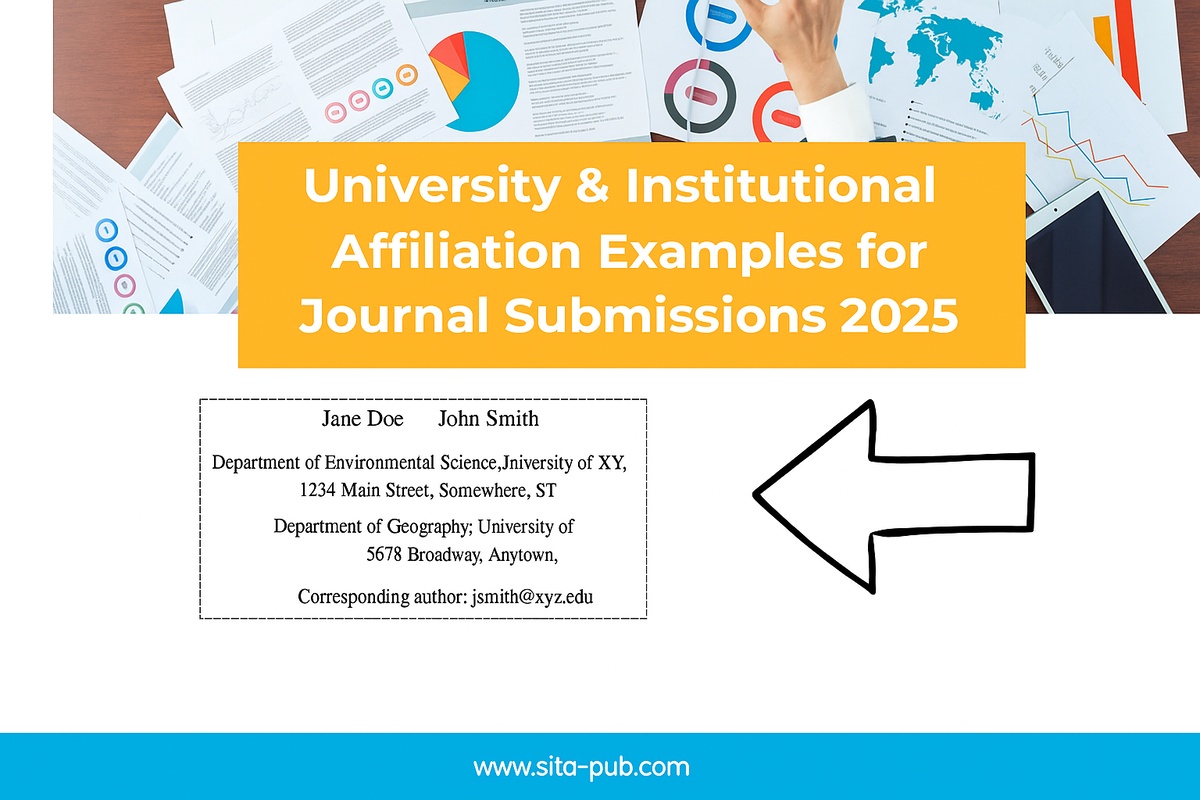
When preparing a research paper for journal submission, authors often focus on methodology, results, and discussion, but one key element is frequently overlooked: the author’s affiliation. The affiliation shows the institution or organization an author is associated with, giving credibility to the research, ensuring proper indexing in databases like Scopus or Web of Science (WOS), and providing recognition to the supporting institution.
A correctly formatted affiliation is not just a formality—it impacts discoverability, professional recognition, and sometimes even eligibility for funding or academic promotion. In this guide, we will explain what affiliation means in a research paper, different types of affiliations, practical examples for various scenarios, and detailed tips for authors—including those whose first language is not English.
We will also cover multi-author scenarios, corresponding authors, and common mistakes researchers make when writing this section. By the end of this guide, you will know how to write affiliation in research paper professionally, clearly, and in a way that meets journal requirements.
What Is Author Affiliation?
Author affiliation identifies the institution, organization, or entity a researcher is connected to at the time of conducting the research. It essentially links the author to a recognized academic or research institution.
Why it matters:
Journals, databases, and readers can properly attribute the research to the right institution.
Facilitates collaboration recognition.
Ensures indexing accuracy in databases like Scopus, WOS, or PubMed.
Avoids confusion when multiple authors share similar names or when an author is associated with multiple institutions.
Department / Faculty → Institution / University → City → Country
Affiliation Component | Description / Details | Example |
|---|---|---|
Department / Faculty | The specific department, faculty, or research center where the research was conducted. | Department of Mechanical Engineering |
Institution / University | Full official name of the institution, university, or research center. | University of California, Berkeley |
City | City where the institution is located. | Berkeley |
Country | Country where the institution is located. | USA |
Superscript / Number | Used to link authors to multiple affiliations or indicate shared affiliations in multi-author papers. | John Doe¹, Jane Smith² |
Corresponding Author Indicator | Usually marked with an asterisk (*) for the corresponding author, often paired with email. | Email: [email protected] |
Multiple Affiliations | If the author has more than one institutional affiliation, each is listed clearly with numbers or superscripts. | ¹Department of Physics, University of Tokyo, Japan²Institute of Advanced Studies, MIT, USA |
Consistency & Formatting | Follow journal style guidelines (APA, IEEE, MLA, etc.), keep punctuation and order consistent. | Department → Institution → City → Country |
Where to Place Affiliation in a Manuscript
Affiliations are typically placed near the author’s name, and most journals accept one of the following formats:
Directly under the author’s name on the first page of the manuscript.
In a footnote or a separate “Author Information” section at the beginning or end of the paper.
Example (Two Authors, Different Affiliations):
John Doe¹, Jane Smith²
¹Department of Physics, University of Cambridge, UK
²Department of Applied Sciences, National University of Singapore
Tips:
Always follow the journal’s specific formatting guidelines, which can differ.
Superscript numbers or symbols (*) are used to match authors with their respective affiliations.
The corresponding author is often indicated with an asterisk and their email address.
Types of Affiliation
University Affiliation
A university affiliation refers to the academic institution where the author is enrolled or employed. It is the most common type of affiliation in academic papers.
Example:
Department of Biochemistry, Harvard University, Cambridge, MA, USA
Includes department or faculty.
Provides clarity on where the research was performed.
Institutional Affiliation
Institutional affiliations refer to research centers, laboratories, hospitals, or private companies that support the research.
Example:
Max Planck Institute for Chemical Physics of Solids, Dresden, Germany
Often used in fields like applied sciences, medical research, or industry collaborations.
Affiliation Examples for Different Scenarios
One Researcher, Multiple Affiliations
Sometimes a researcher may be affiliated with more than one institution. This could be due to:
Studying in one country but working in another
Holding dual appointments or research positions
Conducting interdisciplinary research across departments
Example:
John Doe
Department of Molecular Biology, University of Tokyo, Japan
Center for Genomic Research, Stanford University, USA
Superscripts or numbers are used to link the author to each affiliation.
Multiple affiliations should always be listed clearly and in the correct order.
Multiple Authors Sharing the Same Affiliation
When multiple authors are from the same institution:
Example:
John Doe¹, Jane Smith¹, Ahmed Khan¹
¹Department of Computer Science, University of Toronto, Canada
All authors share the superscript “1,” showing a common affiliation.
This is important for proper indexing and clear attribution.
Authors with Different Academic Histories
An author may have graduated from one institution and now be employed at another. Both affiliations can be listed to show the academic journey.
Example:
John Doe, PhD, University of Oxford; currently Research Fellow, MIT
Shows previous and current institutional ties.
Especially useful when work was conducted at a previous institution but the author has since moved.
Non-Native English Speakers
Writing affiliations in English can be challenging. Here are key tips:
Use the order: Department → Institution → City → Country
Avoid abbreviations unless they are officially recognized
Example: Department of Environmental Science, University of Melbourne, Melbourne, Australia
Keep punctuation and spacing consistent across all affiliations.
Corresponding Author and Author Order
The corresponding author communicates with the journal and readers and is usually marked with an asterisk (*) along with an email.
Author order typically reflects the contribution level. The first author is generally the main contributor.
Affiliation accuracy for the corresponding author is essential to avoid communication issues.
Tips for Writing Affiliations in Research Papers
Use the official names of institutions.
Include department, faculty, or research center.
Clearly separate multiple affiliations with superscripts or numbers.
Follow the journal’s style guide.
Check city and country names for accuracy.
Ensure the corresponding author’s email is correct.
Use consistent formatting across all authors.
Common Mistakes to Avoid
Confusing department and institution.
Using unofficial abbreviations or nicknames.
Omitting city or country information.
Misaligning authors with the correct affiliation.
Failing to identify the corresponding author.
Sample Affiliation Templates
Single Author, Single Affiliation:
John Doe
Department of Mechanical Engineering, University of California, Berkeley, USA
Email: [email protected]
Single Author, Multiple Affiliations:
John Doe
Department of Physics, University of Tokyo, Japan
Institute of Advanced Studies, MIT, USA
Email: [email protected]
Multiple Authors, Shared Affiliations:
John Doe¹, Jane Smith¹, Ahmed Khan²
¹Department of Computer Science, University of Toronto, Canada
²Department of Artificial Intelligence, University of Melbourne, Australia
Why Accurate Affiliations Matter
Ensures correct indexing and discoverability in Scopus, WOS, and PubMed.
Provides professional credibility for authors.
Avoids misattribution in multi-author, multi-institution studies.
Important for grant reporting, collaborations, and academic promotions.
